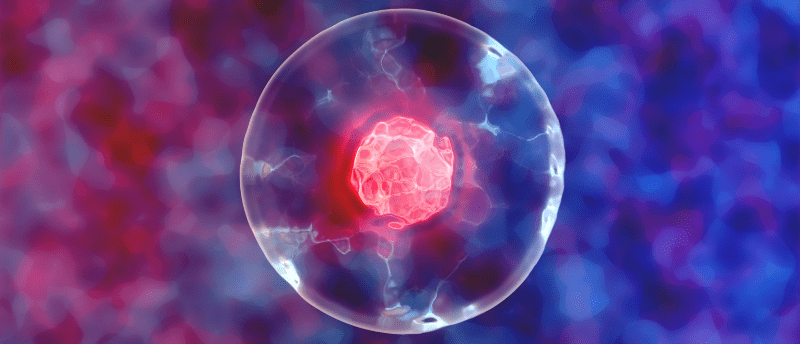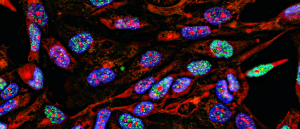AFM-IR ‘sees’ inside cells better than ever

A counterintuitive approach to atomic force microscopy-infrared spectroscopy (AFM-IR) means researchers can now ‘see’ the structure and chemical composition of human cells with unmatched precision.
Cells are the smallest functional units in our bodies and have received long-standing interest from researchers wanting to find out what cells are made of and where each element resides. As technology has advanced, nanoscale structural imaging of cells has been made possible; however, methods to obtain a direct record of the chemical composition are lacking. Knowing what is in the cells and where it is located would create a useful cellular blueprint for a variety of disciplines including biology, chemistry and material science.
Researchers at the Beckman Institute for Advanced Science and Technology (IL, USA), led by Rohit Bhargava, have built upon prior studies in chemical imaging to simultaneously record the structure and chemical composition of human cells at nanoscale resolution.
Optical microscopy uses visible light to illuminate surface-level features, such as color and structure, whereas chemical imaging relies on infrared (IR) light to ‘look’ at a cell’s inner workings. When a cell is exposed to IR light, its temperature rises, causing it to expand. Each type of molecule absorbs IR light at a slightly different wavelength and will emit a unique chemical signature. These absorption patterns can be analyzed to reveal what molecules the cell contains.
AFM-IR can record both the physical structure and chemical structure of a sample with a high resolution. The thermal expansion of molecules can be locally detected using a signal detector, a nanoscale needle that scrapes along the surface of a sample while an IR laser excites it. A map of the cell and the absorption patterns can then be produced.
 Cell-specific protein labeling clicks into place
Cell-specific protein labeling clicks into place
Researchers have developed a novel method to identify proteins that are released by specific types of cells, called BOCTAG, which could lead to advancements in tracking diseases like cancer.
Over the past decade, innovations in spectroscopy have worked on increasing the signal strength of the initial IR wavelengths. “It’s an intuitive approach because we are conditioned to think of larger signals as being better. We think, ‘The stronger the IR signal, the higher a cell’s temperature becomes, the more it expands, and the easier it will be to see,’” explained Bhargava.
However, as the cell expands, the motion of the signal detector becomes more exaggerated and generates increased static (noise), impeding accurate measurements. This means a more powerful IR signal does not actually improve the quality of the chemical images.
“It’s like turning up the dial on a staticky radio station – the music gets louder, but so does the static,” described Seth Kenkel, the lead author of this study. “We need a solution to stop the noise from increasing alongside the signal.”
The researchers tried separating the IR signal from the detector’s movement, which would mean that it can be amplified without being accompanied by the added noise. They used a small IR signal to test their method before amplifying it.
This method achieved high-resolution nanoscale chemical and structural imaging of cells. Additionally, AFM-IR does not require fluorescent labeling or dyeing molecules to increase their visibility under a microscope.
“Now, we can see inside cells in a much finer resolution and with significant chemical detail more easily than ever,” said Bhargava. “This work opens a range of possibilities, including a new way to examine the combined chemical and physical aspects that govern human development and disease.”